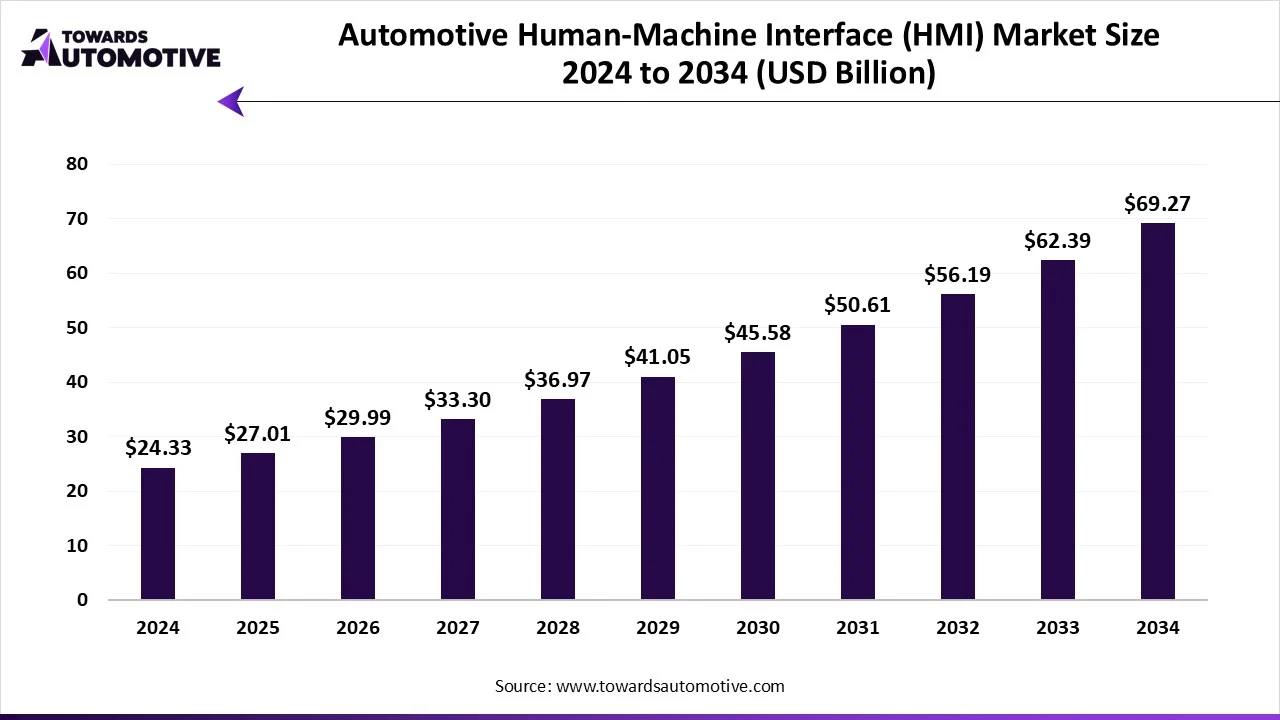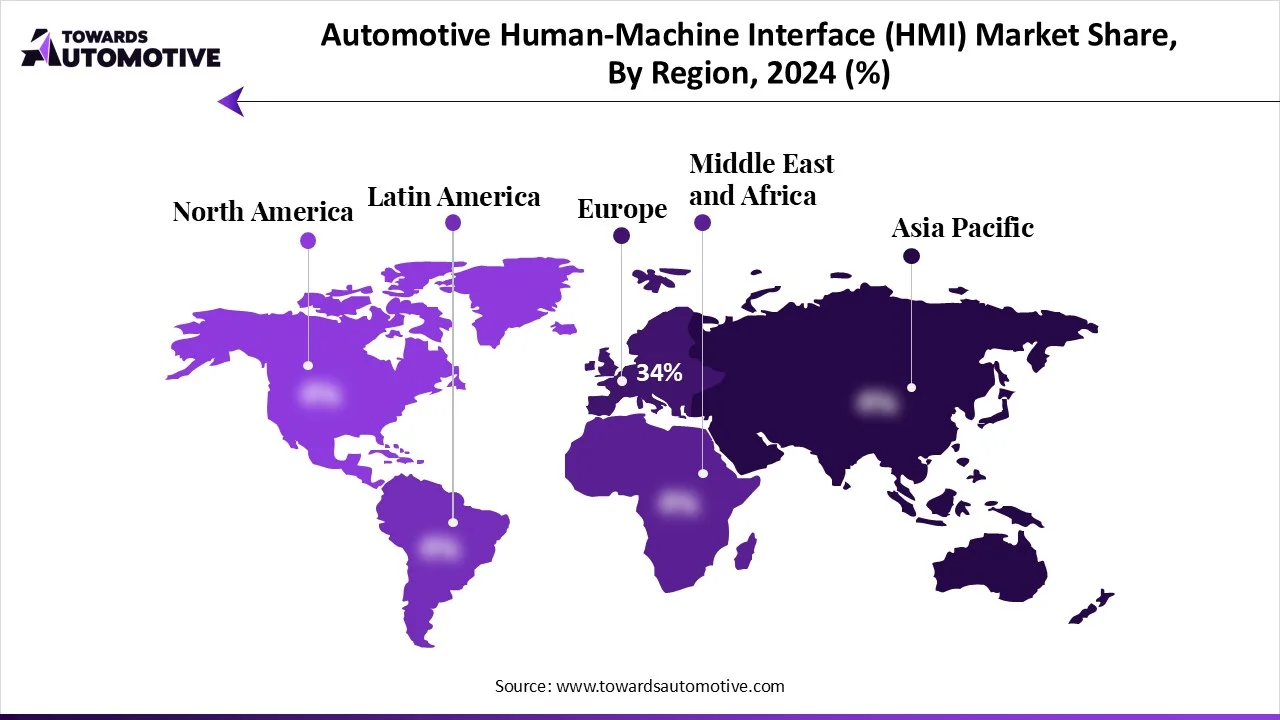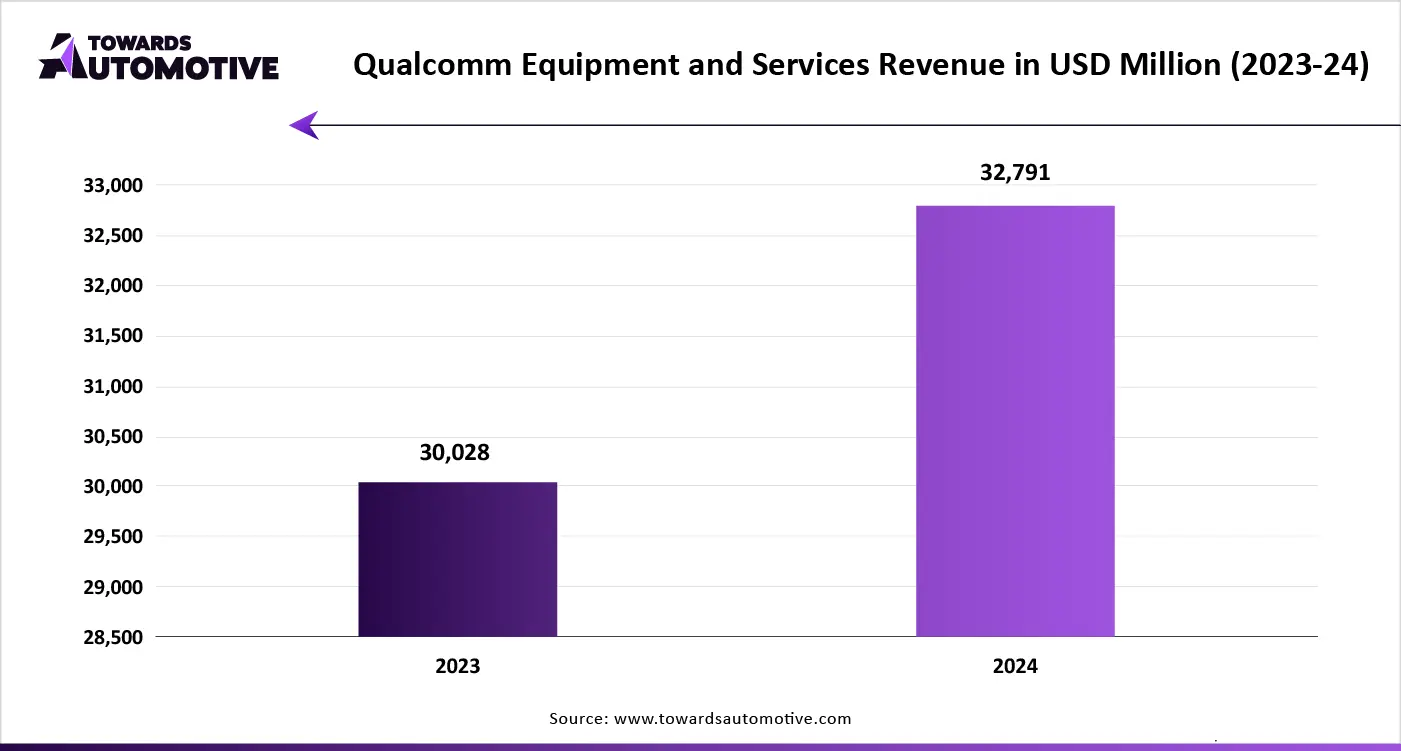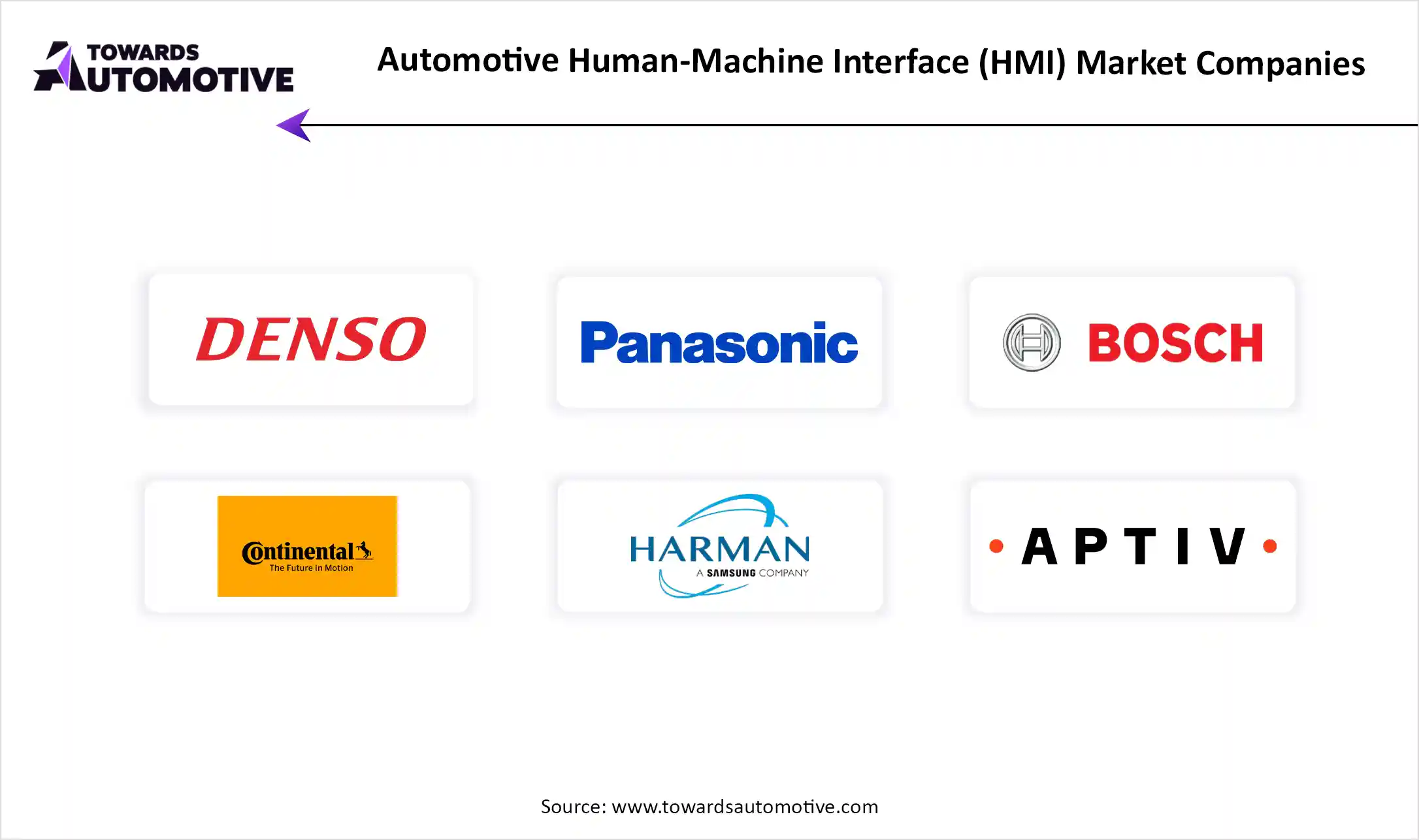September 2025
The automotive human-machine interface (HMI) market is expected to increase from USD 27.01 billion in 2025 to USD 69.27 billion by 2034, growing at a CAGR of 69.27% throughout the forecast period from 2025 to 2034. The increasing demand for luxury vehicles in developed nations coupled with technological advancements in the automotive sector has driven the market expansion.
Additionally, numerous government initiatives aimed at mandating ADAS in vehicles along with integration of advanced HMI solutions in modern cars to enhance traveling experience is playing a vital role in shaping the industrial landscape. The integration of AI and IoT in automotive HMI systems is expected to create ample growth opportunities for the market players in the future.

Unlock Infinite Advantages: Subscribe to Annual Membership
The automotive human-machine interface (HMI) market is a prominent branch of the automotive industry. This industry deals in development and distribution of HMI solutions for the automotive sector. There are various types of interfaces developed in this sector comprising of touch-based interfaces, voice-controlled systems, gesture recognition systems, haptic feedback systems, multimodal interfaces, HUDs, rotary controllers & touchpads, and some others. These interfaces are operated using numerous technologies consisting of visual interface, acoustic interface, mechanical interface, ambient interface and some others. It is designed for various types of vehicles including passenger cars, commercial vehicles, electric vehicles (EVs), autonomous vehicles and some others. The end-users of these solutions comprise of automobile manufacturers (OEMs), tier 1 suppliers, infotainment & HMI software providers, fleet operators & mobility providers and some others. This market is expected to rise significantly with the growth of the software industry around the world.
The major trends in this market consists of AI-based HMI systems, rising sales of EVs and popularity of autonomous ride-hailing services.
The integration of AI in automotive HMI systems helps in enhancing user experience and improving safety & reliability in modern cars. For instance, in April 2025, ECARX launched ECARXperience. ECARXperience is an advanced AI-based human-machine interface (HMI) system designed for modern vehicles.
The sales of EVs have increased rapidly in several countries such as India, China, the U.S, Canada and some others for reducing vehicular emission. According to the International Energy Agency, around 17 million EVs were sold globally in 2024.
The fleet operators have started deploying autonomous cars to enhance ride-hailing operations in different parts of the world. For instance, in July 2025, Waymo announced to launch an autonomous ride-hailing service in Dallas. This self-driving ride-sharing service is expected to be launched by 2026.
Automotive Human-Machine Interface (HMI) Market Size, By Interface Type, (USD Billion)
| Year | Touch-Based Interfaces | Voice-Controlled Systems | Gesture Recognition Systems | Haptic Feedback Systems | Multimodal Interfaces | Heads-Up Displays (HUDs) | Rotary Controllers & Touchpads |
| 2024 | 8.39 | 3.77 | 2.48 | 2.01 | 2.56 | 2.85 | 2.27 |
| 2025 | 14.75 | 6.30 | 3.98 | 3.09 | 4.00 | 4.80 | 4.26 |
| 2026 | 24.82 | 10.02 | 7.47 | 5.89 | 6.50 | 8.15 | 6.80 |
| 2027 | 41.68 | 17.21 | 11.28 | 8.50 | 12.02 | 14.83 | 12.33 |
| 2028 | 70.26 | 30.00 | 19.90 | 14.32 | 20.53 | 23.40 | 21.01 |
| 2029 | 120.16 | 49.91 | 35.64 | 24.20 | 34.20 | 38.25 | 35.04 |
| 2030 | 197.89 | 83.14 | 54.33 | 51.53 | 58.73 | 68.21 | 57.04 |
| 2031 | 350.62 | 147.91 | 94.03 | 75.74 | 98.28 | 103.90 | 95.45 |
| 2032 | 576.74 | 259.00 | 168.70 | 136.69 | 146.52 | 187.60 | 159.10 |
| 2033 | 1009.57 | 415.67 | 245.70 | 213.48 | 279.91 | 325.47 | 275.52 |
| 2034 | 1724.71 | 701.57 | 441.61 | 362.85 | 473.18 | 547.66 | 427.34 |
The touch-based interfaces segment dominated the market with a share of 36%. The rising use of touch displays in modern cars to enhance the driving experience has boosted the market expansion. Additionally, the increasing consumer preference to use touch-based interfaces in their vehicles to operate vehicular functions is playing a vital role in shaping the industrial landscape. Moreover, numerous advantages of touch-based interfaces including enhanced user experience, intuitive interaction, increased accessibility, space efficiency and some others is expected to propel the growth of the automotive human-machine interface (HMI) market.
The voice-controlled & gesture systems segment is expected to grow with the highest CAGR during the forecast period. The rising interest of consumers to use voice-controlled gestures in luxury vehicles for operating advanced features has driven the market expansion. Additionally, continuous research and development activities conducted by automotive manufacturers for developing voice-controlled interface for modern cars is playing a vital role in shaping the industrial landscape. Moreover, collaborations among software developers and AI companies to develop advanced gestures frameworks for the automotive sector is expected to drive the growth of the automotive human-machine interface (HMI) market.
The visual interface segment dominated the market with a share of 40%. The increasing consumer interest to integrate HUDs and LED displays in modern cars for navigation purposes has boosted the market expansion. Additionally, the growing emphasis of automotive companies on integrating high-quality displays in luxury cars to enhance infotainment experience is playing a vital role in shaping the industrial landscape. Moreover, the availability of automotive displays in numerous online platforms such as Amazon, Ebay, Walmart and some others is expected to foster the growth of the automotive human-machine interface (HMI) market.
The acoustic interface segment is expected to expand with the fastest CAGR during the forecast period. The increasing use of acoustic interface in modern cars to deliver sound and data throughout the car for enhancing connectivity with mobility has boosted the market expansion. Additionally, the growing application of AVAS system in EVs to enhance the safety of vulnerable road users (VRU) is playing a vital role in shaping the industrial landscape. Moreover, the integration of these interfaces in SDVs to emit vehicle warning sounds is expected to propel the growth of the automotive human-machine interface (HMI) market.
The passenger cars segment led the market with a share of 51%. The increasing sales and production of passenger vehicles in several countries such as India, China, the U.S., Germany and some others has driven the market expansion. Additionally, the growing demand for luxury cars from the HNIs coupled with integration of advanced HMI interfaces in high-end passenger cars is playing a vital role in shaping the industrial landscape. Moreover, the rising use of advanced infotainment systems in modern cars to enhance driving experience is expected to drive the growth of the automotive human-machine interface (HMI) market.
The electric vehicles (EVs) segment is expected to expand with the fastest CAGR during the forecast period. The increasing adoption of EVs in numerous developed nations such as the U.S., Canada, France, Germany and some others has driven the market expansion. Additionally, numerous government initiatives aimed at providing offers and incentives to EV consumers is playing a vital role in shaping the industrial landscape. Moreover, the use of AI-based HMI interfaces in luxury EVs to provide numerous information such as battery percentage, temperature, range, and some others is expected to boost the growth of the automotive human-machine interface (HMI) market.
The infotainment systems segment dominated the industry with a share of 38%. The growing demand for AI-based infotainment systems has boosted market growth. Additionally, the increasing emphasis of automotive brands for integrating high-quality infotainment units in modern cars to enhance the music experience is driving the market expansion. Moreover, partnerships among automotive manufacturers and infotainment manufacturers to develop high-quality infotainment systems for luxury cars is expected to boost the growth of the automotive human-machine interface (HMI) market.
The head-up displays segment is expected to rise with the highest CAGR during the forecast period. The rising use of HUDs in luxury cars to enhance the driving experience has boosted the market expansion. Additionally, the growing consumer demand for enhanced in-vehicle user experience coupled with increased focused on vehicle safety is contributing to the industry in a positive manner. Moreover, the increasing application HUDs in self-driving cars to enhance autonomous driving is expected to foster the growth of the automotive human-machine interface (HMI) market.
The standard interface segment dominated the industry with a share of 43%. The growing adoption of standard HMI interface in low-priced vehicles has boosted the market expansion. Additionally, the rising use of this interface for providing essential driving information such as fuel level, speed, engine temperature and some others is accelerating the industrial growth. Moreover, partnerships among automotive brands and HMI providers to develop standard HMI platforms is expected to foster the growth of the automotive human-machine interface (HMI) market.
The AI-based adaptive interfaces segment is expected to expand with the highest CAGR during the forecast period. The rising demand for AI-based adaptive interfaces in autonomous vehicles to enhance safety and improve driving experience has boosted the market expansion. Additionally, rapid investment by software developers for developing AI-based interfaces for luxury cars is contributing to the industry in a positive manner. Moreover, the surging use of these interfaces to enhance in-vehicle interaction among the drivers and cars is expected to drive the growth of the automotive human-machine interface (HMI) market.
The OEMs segment dominated the industry with a share of 55%. The increasing demand for HMI systems from automotive OEMs to use in modern cars has boosted the market expansion. Additionally, the growing emphasis of people to buy genuine products from OEMs for getting warranty and assurance is playing a vital role in shaping the industrial landscape. Moreover, the availability of wide range of HMI systems in OEM platforms is expected to propel the growth of the automotive human-machine interface (HMI) market.
The infotainment & HMI software providers segment is expected to expand with the highest CAGR during the forecast period. The rising use of HMI solutions in automotive infotainment systems to enhance the driving experience has boosted the market expansion. Additionally, the research and development activities related to connected HMI software is plating a vital role in shaping the industry in a positive direction. Moreover, partnerships among software developers and automotive manufacturers to integrate advanced HMI software in luxury cars is expected to foster the growth of the automotive human-machine interface (HMI) market.
Automotive Human-Machine Interface (HMI) Market Size, By Region, (USD Billion)
| Year | North America | Europe | Asia-Pacific | Latin America | Middle East & Africa |
| 2024 | 6.22 | 7.10 | 6.07 | 2.51 | 2.42 |
| 2025 | 10.29 | 12.08 | 10.53 | 4.14 | 4.13 |
| 2026 | 17.59 | 20.87 | 17.83 | 6.98 | 6.38 |
| 2027 | 29.21 | 35.12 | 29.81 | 12.30 | 11.43 |
| 2028 | 50.29 | 60.79 | 48.02 | 20.98 | 19.33 |
| 2029 | 84.63 | 103.78 | 83.91 | 32.63 | 32.45 |
| 2030 | 140.74 | 175.73 | 140.93 | 57.48 | 56.00 |
| 2031 | 243.30 | 302.64 | 237.07 | 89.46 | 93.46 |
| 2032 | 405.24 | 509.95 | 403.38 | 153.97 | 161.82 |
| 2033 | 658.18 | 875.09 | 666.07 | 278.79 | 287.19 |
| 2034 | 1109.07 | 1495.77 | 1142.35 | 479.57 | 452.17 |

Europe led the automotive human-machine interface (HMI) market with a share of 34%. The growing sales of luxury cars in numerous countries such as Germany, Italy, France, UK and some others has boosted the market expansion. Additionally, numerous government regulations aimed at enhancing vehicular safety coupled with increasing adoption of autonomous trucks in several industries such as mining, logistics, construction and some others is playing a vital role in shaping industrial landscape. Moreover, the presence of various market players such as Continental AG, Bosch GmbH, Valeo S.A, Aptiv PLC, Magneti Marelli and some others is expected to propel the growth of the automotive human-machine interface (HMI) market in this region.
Germany is the major contributor in this region. The increasing adoption of autonomous vehicles along with numerous government initiatives for enhancing road safety has driven the market expansion. Also, the deployment of self-driving cars by fleet operators coupled with rising disposable income of the people is shaping the industry in a positive direction.
Asia Pacific is expected to grow with the highest CAGR during the forecast period. The increasing demand for electric vehicles in various nations such as India, China, Japan, South Korea and some others has driven the market expansion. Additionally, technological advancements in the automotive sector coupled with rapid investment by market players on opening up new innovation centers is contributing to the industry in a positive manner. Moreover, the presence of numerous market players such as Denso Corporation, Panasonic Corporation, Nippon Seiki Co., Ltd., Samsung and some others is expected to drive the growth of the automotive human-machine interface (HMI) market in this region.
China led the market in this region. The growing sales and production of passenger vehicles coupled with technological advancements in the software industry has boosted the market expansion. Additionally, the presence of numerous automotive manufacturers such as Xpeng, BYD, SAIC and some others is playing a vital role in shaping the industrial landscape.
The automotive human-machine interface (HMI) market is a highly competitive industry with the presence of several dominating players. Some of the prominent companies in this industry consists of Denso Corporation, Panasonic Corporation, Bosch GmbH, Continental AG, Harman International (Samsung), Aptiv Plc, Valeo S.A., Magneti Marelli, Visteon Corporation, Alpine Electronics, Texas Instruments, Nippon Seiki Co., Ltd., Mitsubishi Electric Corporation, Nvidia Corporation, Renesas, Qualcomm Technologies Inc. and some others. These companies are constantly engaged in developing HMI solutions for the automotive sector and adopting numerous strategies such as business expansions, collaborations, launches, joint ventures, acquisitions, partnerships and some others to maintain their dominance in this industry.


By Interface Type
By Technology
By Vehicle Type
By Product
By Access Mechanism
By End-User/OEM Type
By Region
September 2025
September 2025
September 2025
September 2025
We offer automotive expertise for market projections and customizable research, adaptable to diverse strategic approaches.
Contact Us